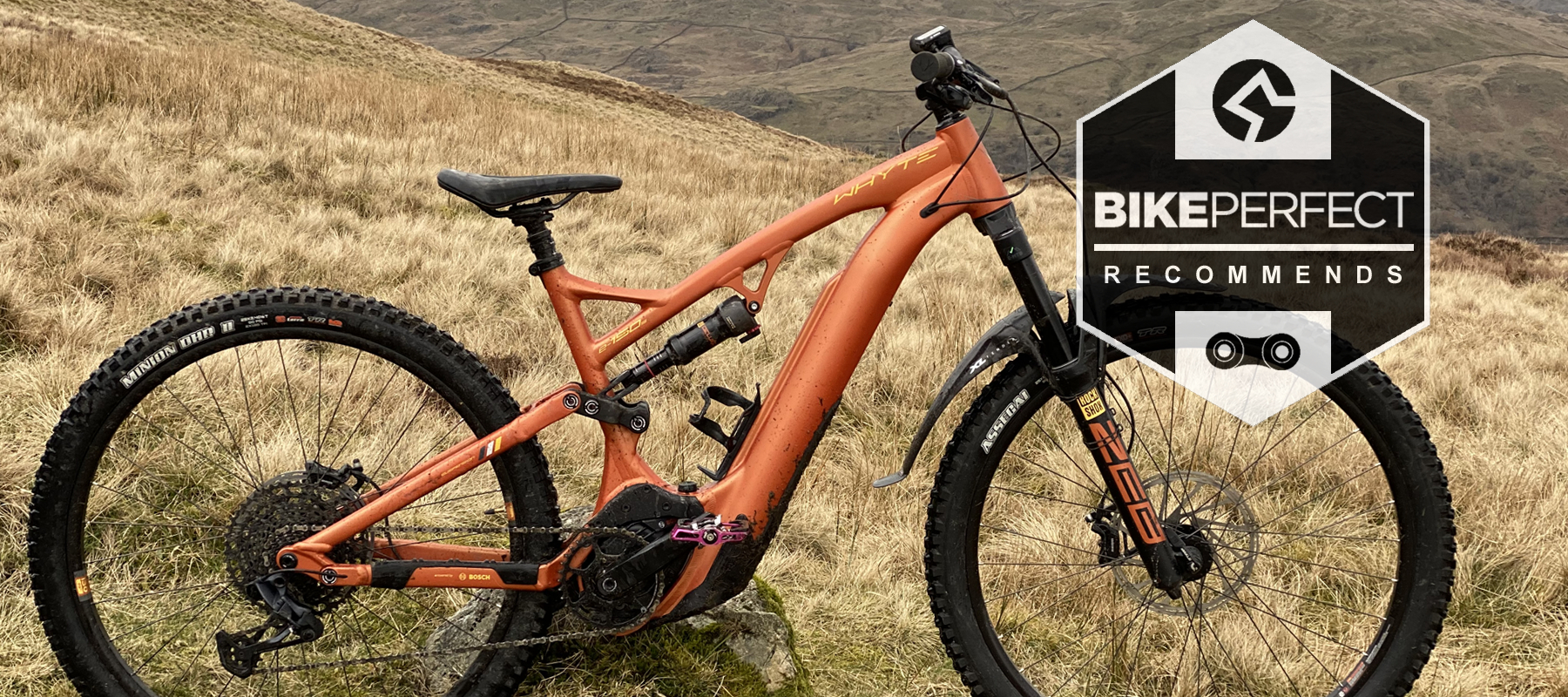Bike Perfect Verdict
Uniquely planted handling and sorted componentry keep Whyte’s hardcore trail e-MTB in the game but in terms of price and tech it’s under pressure from bigger-battery Bosch Smart System bikes
Pros
- +
– Fantastic, slammed weight handling
- +
– Impressive control for travel and dampers
- +
– Excellent hardcore tire spec
- +
– Weather beating sealing
- +
– Proven Bosch reliability
Cons
- -
– Cheaper bikes with bigger batteries and Smart System
- -
– Battery removal is awkward
- -
– Less travel than name suggests
- -
– Sticky tire reduces roll
- -
– Cheap, heavy cassette
Why trust BikePerfect
Whyte’s E-MTBs were some of the first to come to market with Bosch’s excellent Gen 4 motor. They used a unique mounting approach to manage battery mass and create an agile yet outrageously surefooted bike we scored super high when we previously reviewed the Whyte E-150 S.
Can fork and tire upgrades keep it competitive against the modern best electric mountain bikes that are using bigger batteries and smarter displays though? We reckon it’s a yes if you’re prioritizing flat-out trail charging over the latest tech.
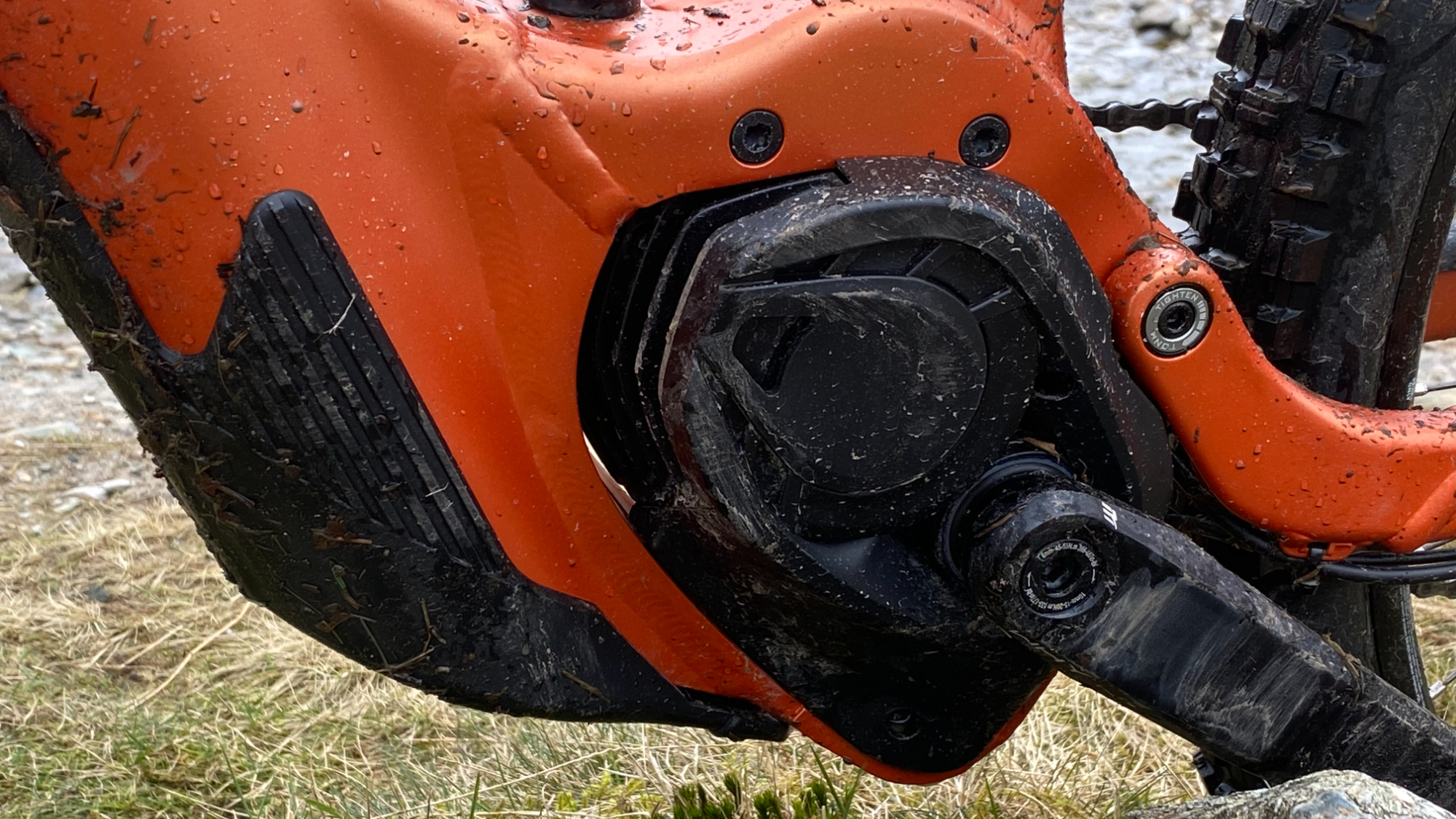
Design and aesthetics
Whyte’s frame doesn’t change this year but it’s still a standout design. While Scott has now introduced a rotated motor to allow the battery to slide down the front on its new Patron bike, Whyte did it several years before. The company also slides the battery lower. It’s a smaller 625Wh battery, not a 750Wh block so the center of gravity is properly slammed. Using a complete tube, rather than one with the side/base cut-out also gives the best strength-to-weight ratio. There’s still room for a medium-size bottle inside the frame even with a raised spine for the internal cable routing.
Keeping the motor open isn’t the sleekest aesthetic solution but it helps with cooling and stops excess noise resonance, too. There are no cables/hoses dangling under the belly like there were on the first-generation Whyte bikes either. It’s not the easiest battery to remove though, so regular recharging needs to be done via the rubber-sealed plug above the motor.
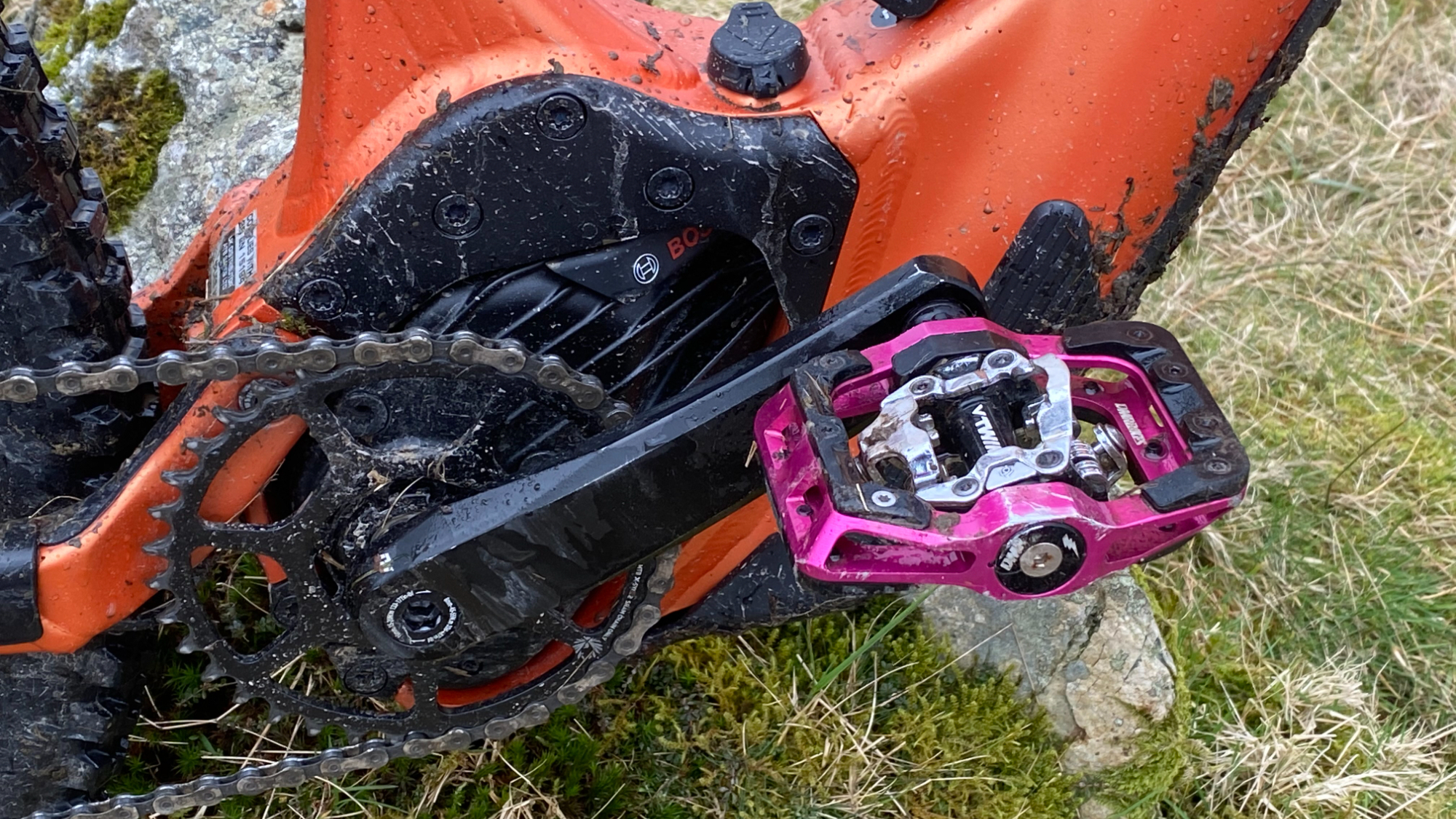
Cable/hose entry points and the seatpost slot are rubber sealed and Whyte offers a lifetime warranty on all the suspension bearings. Angling the motor upwards also allows a relatively short rear-end while still keeping generous mud space around the rear tire. In other words, as you might expect for a bike designed in the UK, it’s set up to handle horrible conditions day in and day out.
The 64.7-degree head tube and 476mm reach on the large we rode are still a handling sweet spot when teamed with a very short 35mm stem. The seat angle is slacker than most of its climbing poised peers at 74.7-degree and the rear ends are the same across all three sizes rather than being proportional. There are no extra small, small, or extra extra large options either.
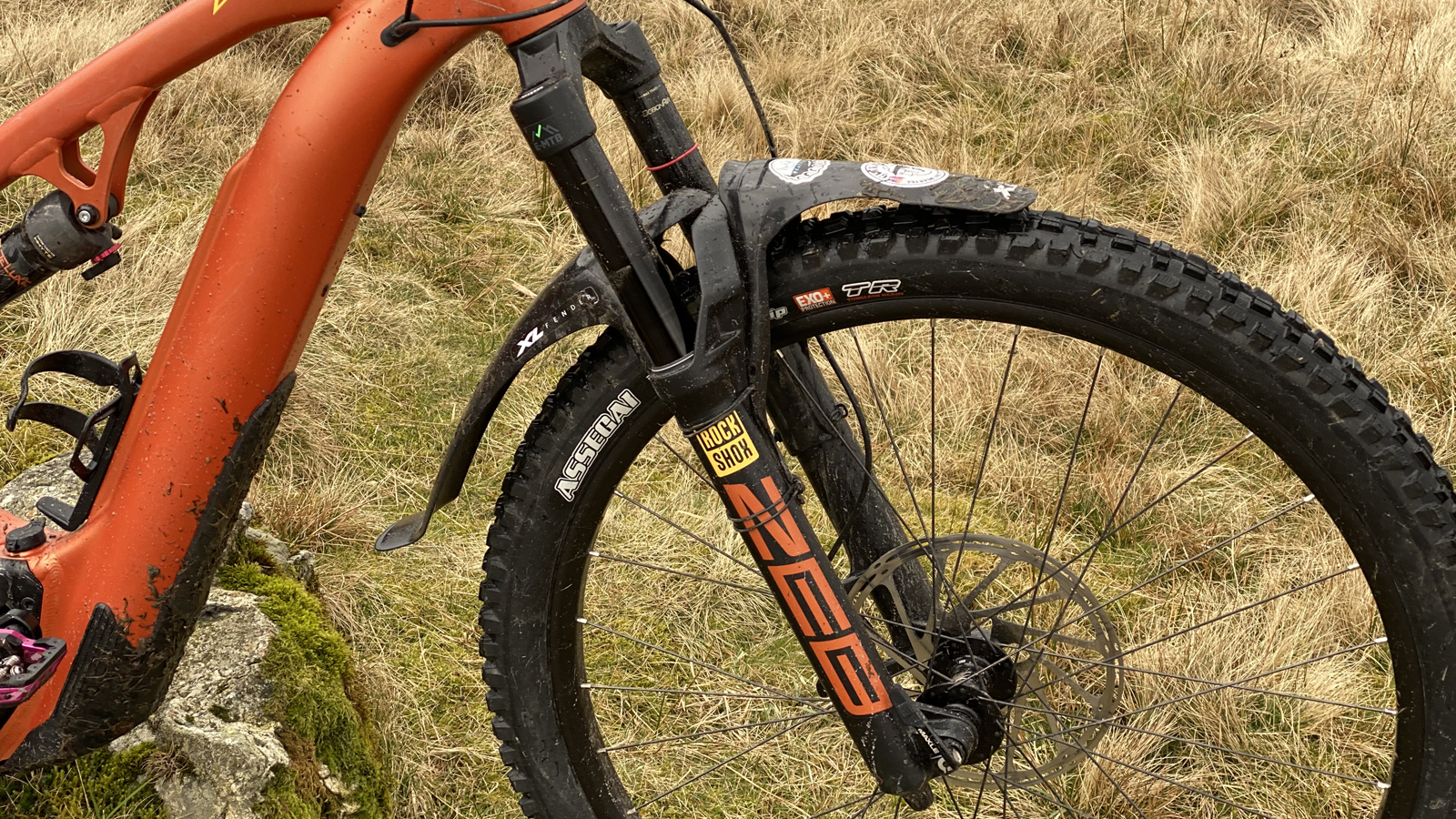
Specifications
As well as the older, smaller battery, the E150 S still has the more basic black and white Purion display/controller rather than the latest Kiox 300 unit and multi-button controller that Bosch introduced for this season. The most affordable Whyte 29er e-MTB (the RS is £6,499) still gets a 38mm legged RockShox Zeb fork delivering 150mm of front suspension. Despite the E150 name, rear travel is significantly less though with around 135mm of wheel movement from the RockShox Deluxe inline shock.
A reinforced DD carcass significantly boosts Maxxis Minion DHR rear tire survival chances - even in the most savage terrain, while a MaxxGrip compound Assegai gives outstanding any-conditions grip upfront. The WTB rims are sleeve jointed E-bike optimized versions, top-quality DT Swiss spokes thread into durable brass nipples and the rear hub is reinforced, too. Whyte has also used SRAM’s E-bike-specific single-click GX shifter to stop you from dragging the chain too far across the cassette in one go which can be really destructive with all the extra motor power in play. The cassette itself is a basic PG1210 block with a restricted 11-50T range and a splined freehub that makes upgrading awkward. Overall value is adequate rather than amazing compared to more recent or just premium kit-loaded designs from other brands.
The large 36T chainring is a useful ‘beyond the motor’ speed-boosting touch on a bike targeted at trail riders. SRAM’s Guide RE brakes also match trail levers to older DH calipers for tons of stopping power and you get heat resistant, all-weather sintered brake pads as standard. The Whyte ‘Drop-It’ seat post is essentially the same as the excellent PNW Rainier dropper, too, complete with adjustable stroke to maximize drop for each frame size. The grips are genuinely Whyte’s own design though, specifically the work of Sam Shucksmith.
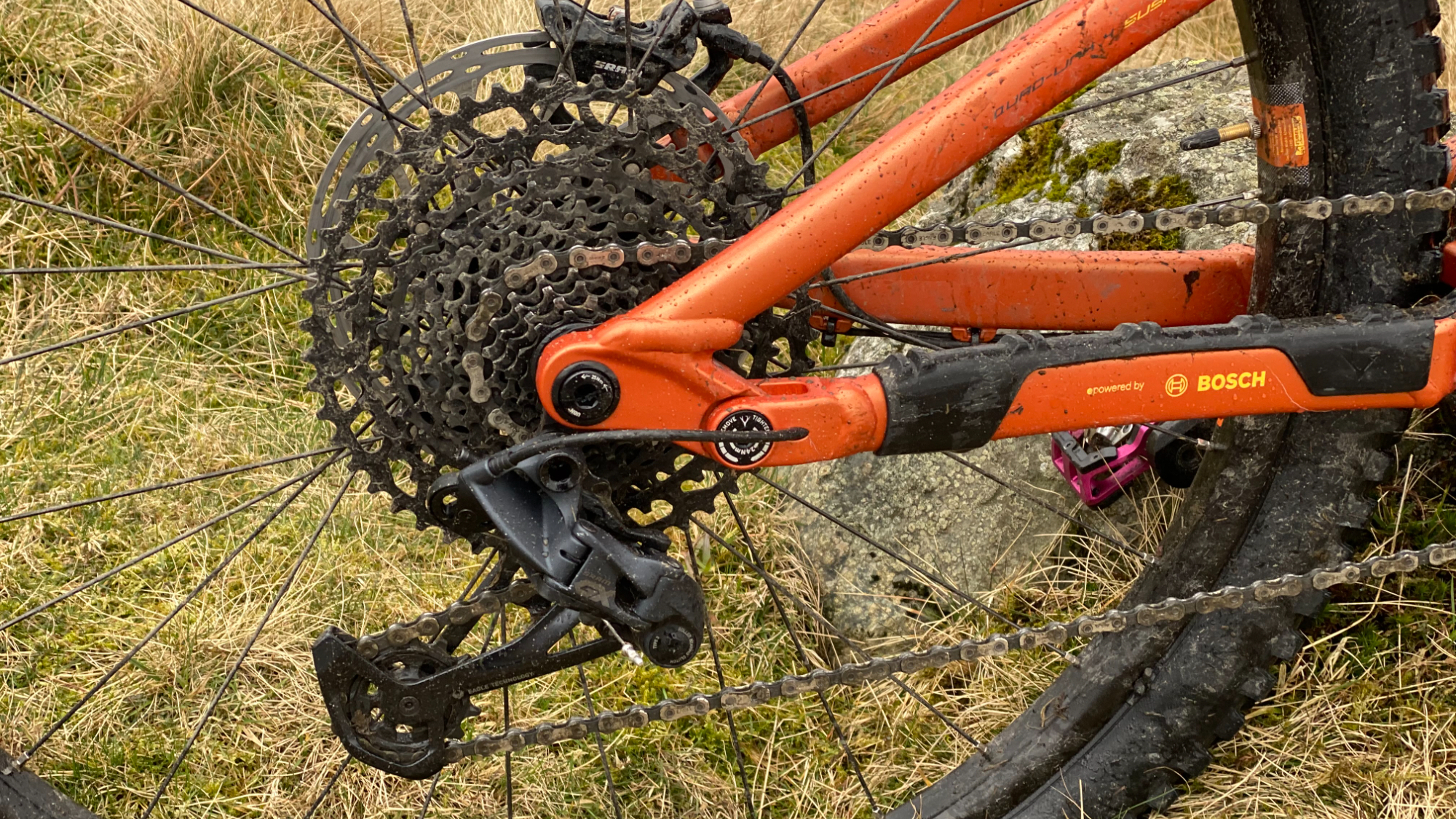
Performance
The fact that Sam is also one of the fastest Enduro riders in the UK is significant to way more factors than just the grip design. Sam and the other riders from Whyte’s Gravity team were crucial in proving the advantage of the rolled motor and dropped battery when it comes to handling. You don’t need to be an elite-level descender to notice how much easier the E150 is to tip into corners, change lines, and generally play and pop around on compared to the stubborn ‘stand up’ prone handling balance of higher-center gravity bikes. The super-short stem and short fork offset (something Whyte was one of the first to introduce) also help counter flick the bike into turns or tweak the front wheel to get full traction potential from the sticky-compound Maxxis tire. Add the extra stiffness from the down tube and the extra overlap of the shortened stroke Zeb fork and you can drive the Whyte super hard into corners and rip it around with those fat grips scraping as close to the ground as you can get them. The lowered center of gravity, sturdy wheels, and top-quality tire spec give it a super surefooted feel even on the sketchiest surfaces too. In other words, while the screen and switches might be old school the Whyte will teach any other ‘full fat’ E-bike a lesson in super-aggressive, dynamic handling poise when it comes to the most technical, twisty trails.
While it’s no lightweight for a mid-battery bike and the sticky front tire inevitably slows things down, the pedal response through the rear suspension architecture is deliberately proactive. This has several benefits. Firstly whether you’re driving hard but still within the regionally restricted speed range of the Bosch motor or pushing beyond it on the big 36T chainring (which happened a surprising amount on our demo ride) there’s a really positive, encouraging feel. It also gives you lots of feedback on how much traction there’s still left between tire and trail so you can balance torque appropriately. Thirdly, it lets Whyte use a really light compression tune in the rear shock so it’s impressively sensitive and supple when you’re off the gas, again boosting communication and connection. The slight rear lift under power also helps keep it engaged on climbs, although the seat angle is more suited for shallower spin slopes than super steep technical scrambles.
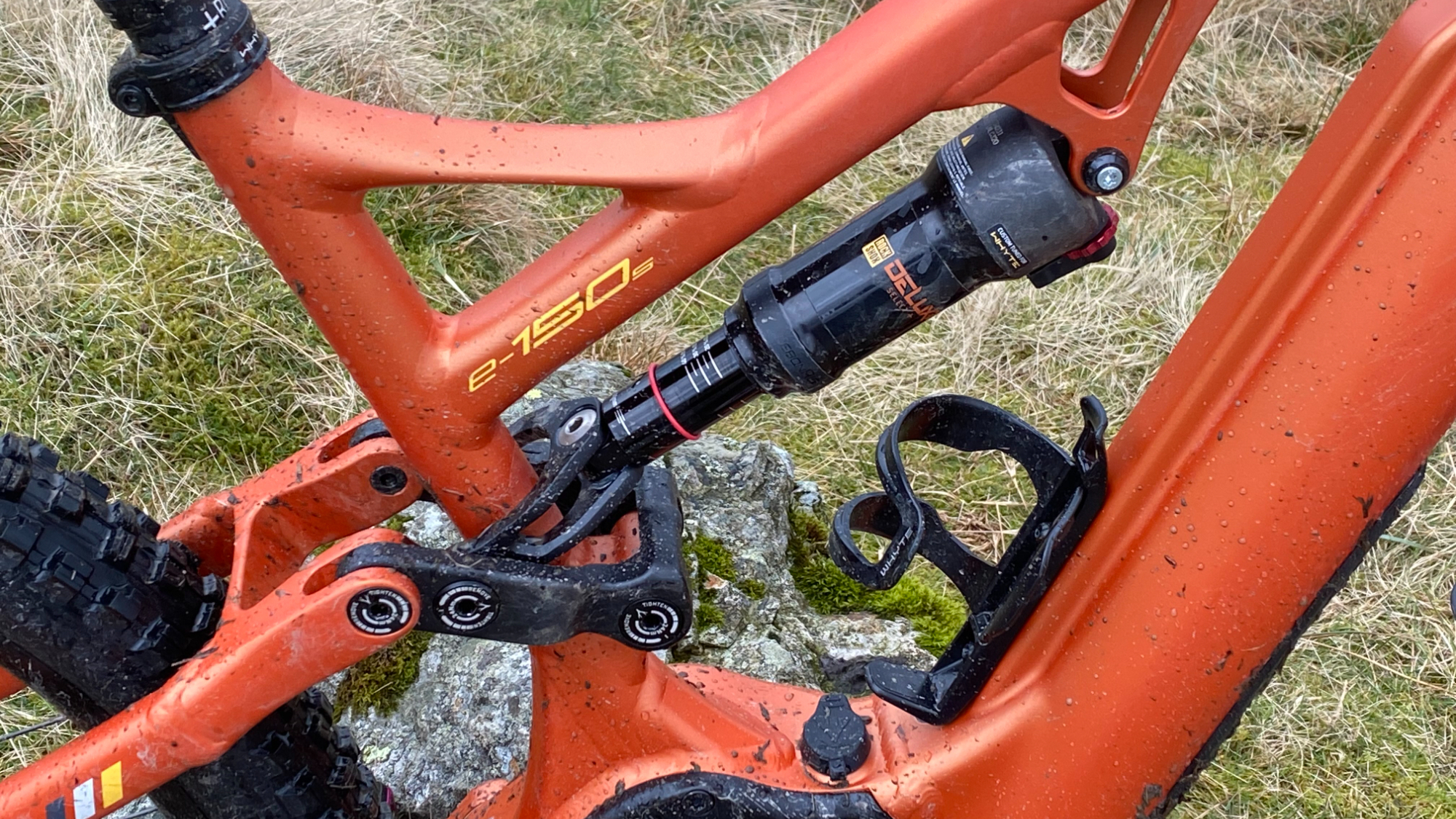
The downsides compared to a more soggy-feeling neutral setup are slightly more kickback through the pedals when slapping into square-edged stuff. There’s also more chance of spinning the rear wheel if you get those torque calculations wrong. Given how much this bike likes to be pushed and piloted rather than sat on like a passenger I think the suspension setup really suits it. It certainly didn’t hang around down Garburn Pass - one of the fastest, roughest, boulder-strewn descents in the Lake District - and the relatively simpler dampers at either end stayed impressively composed, too. The sticky, super-accurate front end and slammed center of gravity were showcased particularly well by the sweeping turns halfway down that can sometimes stand a bike up awkwardly if it’s stubborn on entry. As stated previously the reinforced rear tire encourages heels down and brakes off confidence rather than hesitance even on the nastiest geology, too.
At moments like these, a display under your nose or buttons under your thumb is very much a secondary factor. It would definitely be good to see an updated Smart System version of the bike to keep it competitive in terms of tuning and rider interaction though. While range isn’t an issue for most rides another 125Wh of capacity in the down tube would make it competitive with the ’22 year model bikes from other brands as well.
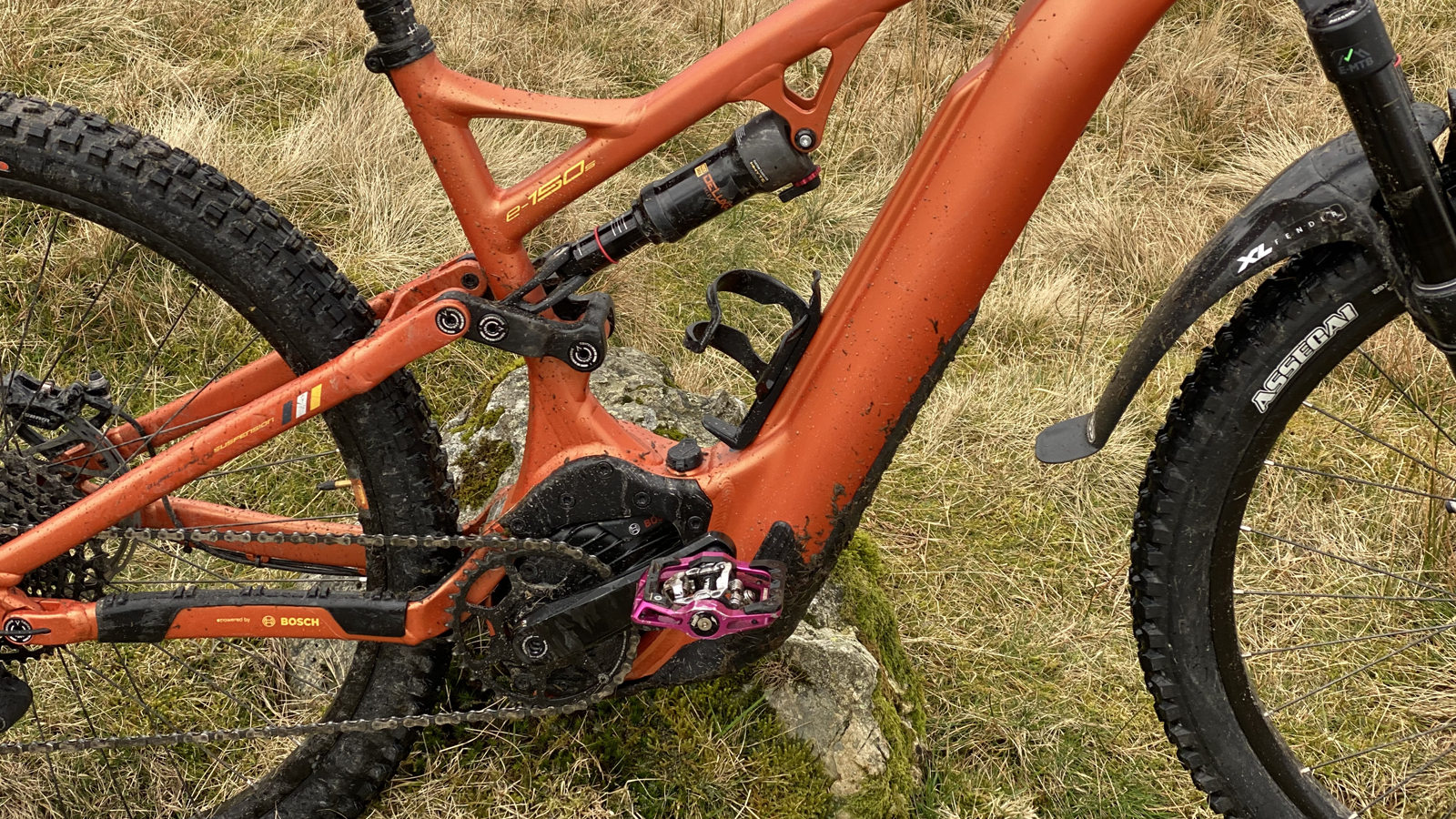
Verdict
Whyte’s 29er e-MTB is definitely showing its age in terms of electrics and that potentially affects value. Even in its most affordable ’S’ format, it’s still the best dynamically balanced and hardcore handling happy trail e-MTB around though. Fork and tire updates are a win in terms of increased control, too, so if you’re more into chasing maximum rush on the trail whatever the weather than scrolling through a fancy display then the E150 S will definitely push your buttons.
Tech Specs: Whyte E150 S e-MTB
- Price: $TBC / £6,349
- Model name: Whyte E150 S
- Discipline: Trail/Enduro
- Head angle: 64.7-degree
- Frame material: 6061 T6 custom-butted and hydroformed aluminum
- Size: L
- Weight: 25.9kg
- Wheel size: 29in x 2.5in / 2.4in
- Suspension (front/rear): RockShox ZEB 150mm travel, 44mm offset / RockShox Deluxe Select + RT 135mm travel
- Motor and battery: Bosch Performance Line CX (Gen 4) motor and Bosch 625 Wh internal PowerTube
- Drivetrain: SRAM GX Eagle 10-50T 12-speed gearing and E-shifter
- Cranks: Whyte custom crank arms with SRAM X-Sync 2 36T chainring
- Brakes: SRAM Guide RE brakes with 200mm rotors
- Cockpit: Whyte 35 x 780mm bar and 35 x 35mm stem
- Wheelset: WTB HTZ i30 TCS 2.0 30mm rims and double-sealed E-bike hubs
- Tires: Maxxis Assegai 3C Maxxgrip EXO + WT 29 x 2.5in front and Maxxis Minion DHR II 3C MaxTerra DD WT 29 x 2.4in rear tires
- Seatpost: Whyte Drop.It 140-170mm dropper post
- Saddle: Fizik Terra Aidon saddle

Guy Kesteven has been working on Bike Perfect since its launch in 2019. He started writing and testing for bike mags in 1996. Since then he’s written several million words about several thousand test bikes and a ridiculous amount of riding gear. He’s also penned a handful of bike-related books and he reviews MTBs over on YouTube.
Current rides: Cervelo ZFS-5, Specialized Chisel, custom Nicolai enduro tandem, Landescape/Swallow custom gravel tandem
Height: 180cm
Weight: 69kg
